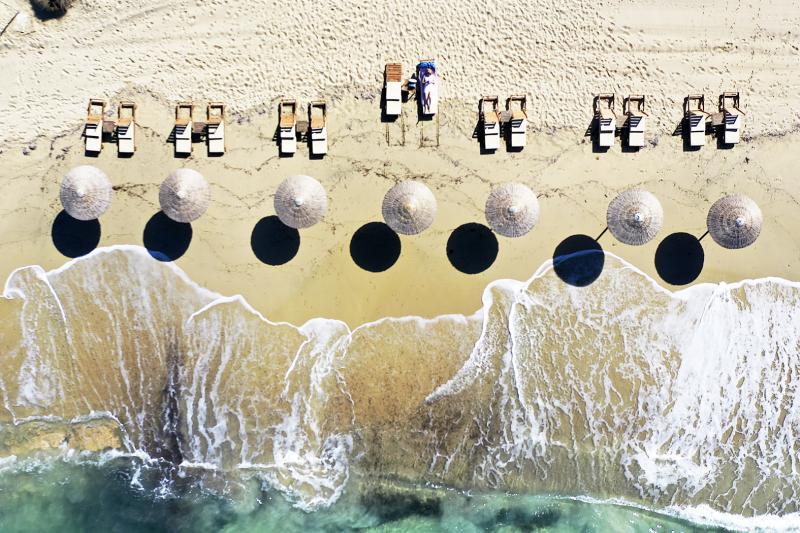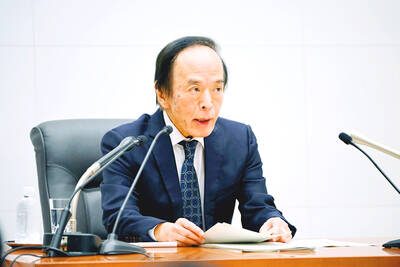Quarantine-free travel bubbles were earlier this year hailed as tourism’s “godsend,” but cancelations and suspensions have deflated hopes they will herald a return to pre-COVID-19 pandemic normality.
Perhaps the world’s most high-profile bubble opened between Australia and New Zealand on April 19, leading to emotional scenes as families split when borders closed almost 400 days earlier were reunited.
Since then, New Zealand has ordered partial shutdowns on four occasions due to virus scares in Australian states, the most serious of which forced Melbourne into a snap lockdown this week.

Photo: AP
A spike of COVID-19 cases in Taiwan last week burst its bubble with the tiny Pacific nation of Palau, while Hong Kong and Singapore have been struggling to stand up a quarantine-free travel arrangement for six months.
Australian Prime Minister Scott Morrison was to take advantage of the trans-Tasman bubble this weekend, when he travels to New Zealand for the first time since the pandemic hit for talks with New Zealand Prime Minister Jacinda Ardern.
The pair were to meet in the South Island mountain resort of Queenstown, where Ardern has vowed to show him the sights, including adventure activities and glacier-fed lakes.
Like tourist centers everywhere, the so-called “adrenaline capital of the world” struggled without overseas travelers, and Queenstown restaurateur Alex Boyes said the trans-Tasman bubble had not proved a panacea.
Boyes had hoped the bubble would lift his business to about 70 percent of its pre-pandemic level, but that has not yet happened.
“Any foreigners we see is something new to us at the moment, but this is a time when Queenstown’s traditionally been quite quiet,” he told reporters. “So we haven’t been swamped by Australians, so to speak, but future bookings through the winter are looking healthy.”
While strong domestic tourism figures in Australia and New Zealand show that holidaymakers remain keen to take a break in troubled times, the data also show that many remain wary of using the international travel bubble.
Bookings to Australia from New Zealand in the six weeks from the bubble’s announcement on April 6 to Tuesday last week were less than a quarter of the numbers during the same period in 2019, data from travel analyst ForwardKeys showed.
ForwardKeys’ Olivier Ponti said bookings the other way were stronger, but still less than 60 percent of what would be considered normal.
“Since the two-way trans-Tasman bubble opened last month, bookings have generally been stronger out of Australia than New Zealand — we’re seeing that Kiwis need a bit of encouragement,” a Qantas Airways Ltd spokeswoman told reporters.
The reason for the caution became apparent this week when New Zealand suspended the bubble with Victoria state and officials in Wellington made it clear that Kiwis stranded in Melbourne’s lockdown were on their own.
“Hunker down and follow the rules,” New Zealand Minister for COVID-19 Response Chris Hipkins said. “We acknowledge this as a difficult time. It’s disruptive and it’s probably expensive if you’re staying in paid accommodation — that’s one of the realities of traveling in the era of COVID.”
Tourism New Zealand acknowledged such a scare would cause temporary disruption and lead to a “wait-and-see” approach among potential passengers.
However, it said Australian market arrivals had recovered to 50 percent, describing it as “a great result and strong contribution.”
“Generally speaking, we have seen a large increase in interest,” general manager in Australia Andrew Waddel said.
“A number of individuals are taking up the offer and booking flights to New Zealand.”
Palauan President Surangel Whipps Jr was also taking a glass-half-full approach after the bubble with Taiwan lasted just seven weeks and resulted in fewer than 300 tourists visiting the island nation.
Whipps has described such bubbles as a symbolic “ray of light” in a pandemic-hit world and vowed to reopen the travel corridor with Taiwan as soon as practicable.
“The purpose of the bubble was, of course, to help get our economy get back,” he said. “I believe it was a success because any tourist, more than one, is a success.”

Taiwan’s long-term economic competitiveness will hinge not only on national champions like Taiwan Semiconductor Manufacturing Co. (TSMC, 台積電) but also on the widespread adoption of artificial intelligence (AI) and other emerging technologies, a US-based scholar has said. At a lecture in Taipei on Tuesday, Jeffrey Ding, assistant professor of political science at the George Washington University and author of "Technology and the Rise of Great Powers," argued that historical experience shows that general-purpose technologies (GPTs) — such as electricity, computers and now AI — shape long-term economic advantages through their diffusion across the broader economy. "What really matters is not who pioneers

In a high-security Shenzhen laboratory, Chinese scientists have built what Washington has spent years trying to prevent: a prototype of a machine capable of producing the cutting-edge semiconductor chips that power artificial intelligence (AI), smartphones and weapons central to Western military dominance, Reuters has learned. Completed early this year and undergoing testing, the prototype fills nearly an entire factory floor. It was built by a team of former engineers from Dutch semiconductor giant ASML who reverse-engineered the company’s extreme ultraviolet lithography (EUV) machines, according to two people with knowledge of the project. EUV machines sit at the heart of a technological Cold

TAIWAN VALUE CHAIN: Foxtron is to fully own Luxgen following the transaction and it plans to launch a new electric model, the Foxtron Bria, in Taiwan next year Yulon Motor Co (裕隆汽車) yesterday said that its board of directors approved the disposal of its electric vehicle (EV) unit, Luxgen Motor Co (納智捷汽車), to Foxtron Vehicle Technologies Co (鴻華先進) for NT$787.6 million (US$24.98 million). Foxtron, a half-half joint venture between Yulon affiliate Hua-Chuang Automobile Information Technical Center Co (華創車電) and Hon Hai Precision Industry Co (鴻海精密), expects to wrap up the deal in the first quarter of next year. Foxtron would fully own Luxgen following the transaction, including five car distributing companies, outlets and all employees. The deal is subject to the approval of the Fair Trade Commission, Foxtron said. “Foxtron will be

INFLATION CONSIDERATION: The BOJ governor said that it would ‘keep making appropriate decisions’ and would adjust depending on the economy and prices The Bank of Japan (BOJ) yesterday raised its benchmark interest rate to the highest in 30 years and said more increases are in the pipeline if conditions allow, in a sign of growing conviction that it can attain the stable inflation target it has pursued for more than a decade. Bank of Japan Governor Kazuo Ueda’s policy board increased the rate by 0.2 percentage points to 0.75 percent, in a unanimous decision, the bank said in a statement. The central bank cited the rising likelihood of its economic outlook being realized. The rate change was expected by all 50 economists surveyed by Bloomberg. The